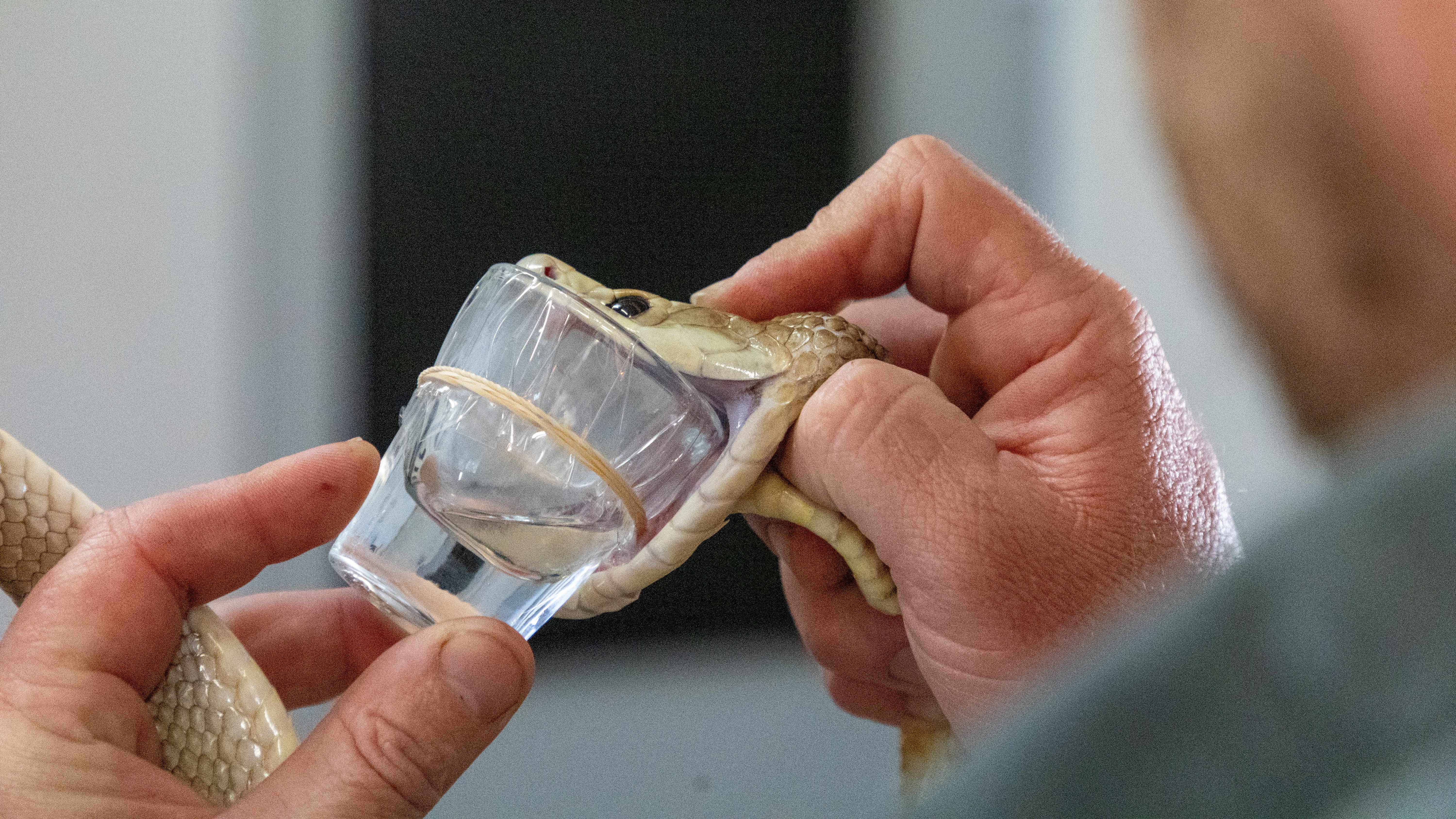Deadly snake delivers enough venom to kill 400 humans in record-breaking 'milking'
A coastal taipan named Cyclone recently delivered three times the average amount of venom for its species in one go, setting a new record.

A captive snake in Australia has broken the world record for the most venom produced in one go, according to the creature's keepers.
With a single bite, the snake — a coastal taipan (Oxyuranus scutellatus) named Cyclone — ejected more than 0.18 ounces (5.2 grams) of venom. That's three times the average amount produced by a coastal taipan and enough to kill 400 humans, according to the Australian Reptile Park, a zoo located 30 miles (50 kilometers) north of Sydney in New South Wales.
"Cyclone is one of our most dangerous snakes here at the park and is known for being quite unpredictable and keeping us all on our toes," Billy Collett, the operations manager at the Australian Reptile Park, said in a statement shared with Live Science.
Coastal taipans are one of the most venomous snake species on Earth. They are native to coastal regions in northern and eastern Australia and typically grow to 6.6 feet (2 meters) long, according to the Australian Museum. Coastal taipans have a rectangular head with a pale snout and large, orange-brown eyes. Their bodies vary in color from yellow to reddish-brown, dark brown and almost black.
Related: Why does Australia have so many venomous animals?
"Coastal taipans are not the most venomous snake in the world, but they are known worldwide for their aggression and bites have caused fatalities every year," Collett said.
The previous venom yield record belonged to another coastal taipan at the park called Whiplash, which produced 0.17 ounces (4.9 g) of venom from a single delivery in 2022.
Get the world’s most fascinating discoveries delivered straight to your inbox.

The park is the only facility in Australia that "milks" taipans to produce antivenom, Collett said. Keepers also extract venom from other deadly snakes, including eastern brown snakes (Pseudonaja textilis), tiger snakes (Notechis scutatus), death adders (Acanthophis) and black snakes (Pseudechis).
Milking snakes can be dangerous, according to the statement. "The process of milking a venomous snake requires keepers to secure the … snake, sink its fangs into a large shot glass covered with plastic and get it to deliver its lethal bite," Collett said. The venom is then freeze-dried, meaning it is dehydrated at low temperature, and sent to a vaccine manufacturer, Collett said.
Cyclone's record-breaking venom contribution will go toward saving someone's life, according to the statement. Around 3,000 snake bites are reported every year in Australia, resulting in approximately 500 hospital admissions and an average of 2 deaths. According to the Australian Snakebite Project, coastal taipans bit 31 people between 2005 and 2015, and although no deaths were found in that project, another study recorded at least one death between 2000 and 2016.

Sascha is a U.K.-based staff writer at Live Science. She holds a bachelor’s degree in biology from the University of Southampton in England and a master’s degree in science communication from Imperial College London. Her work has appeared in The Guardian and the health website Zoe. Besides writing, she enjoys playing tennis, bread-making and browsing second-hand shops for hidden gems.


